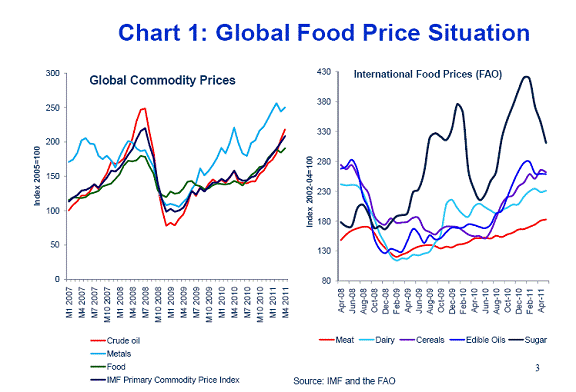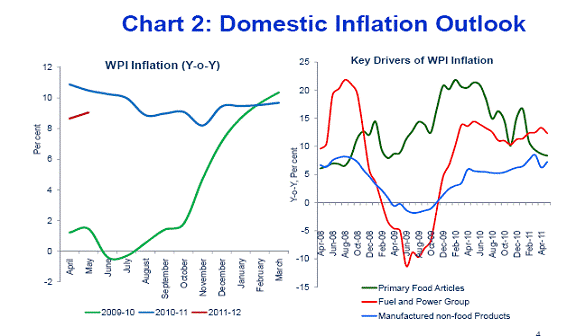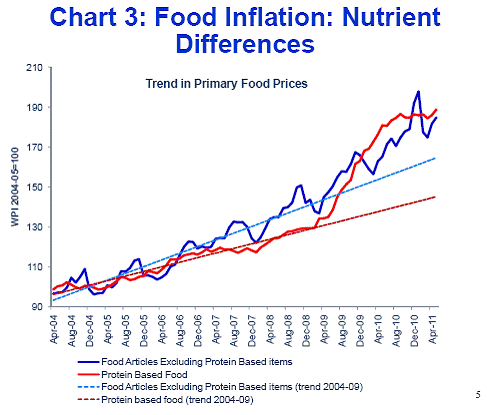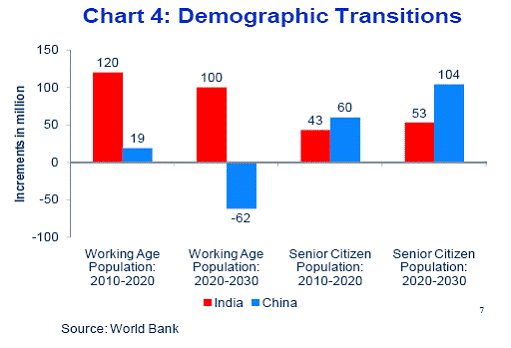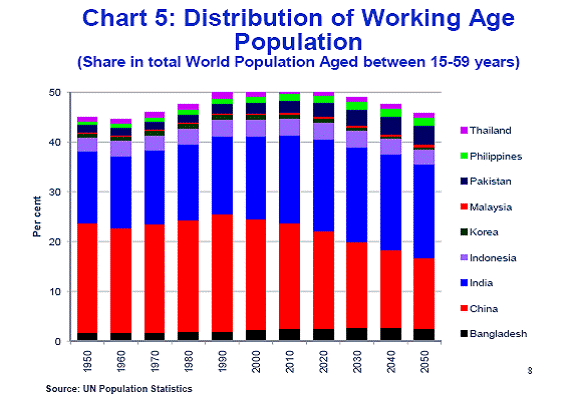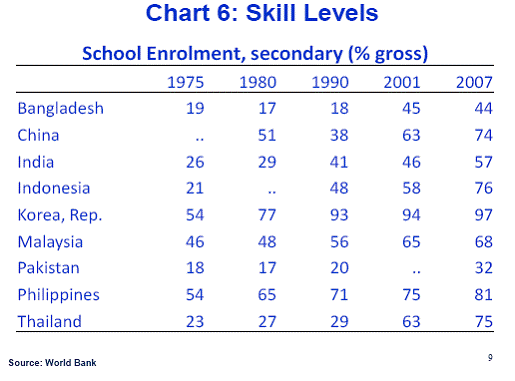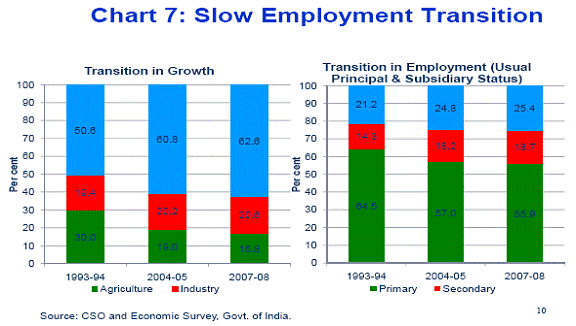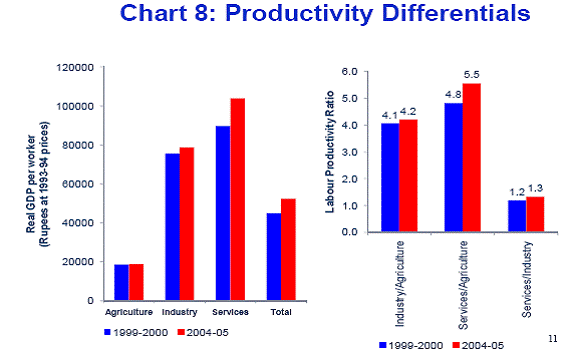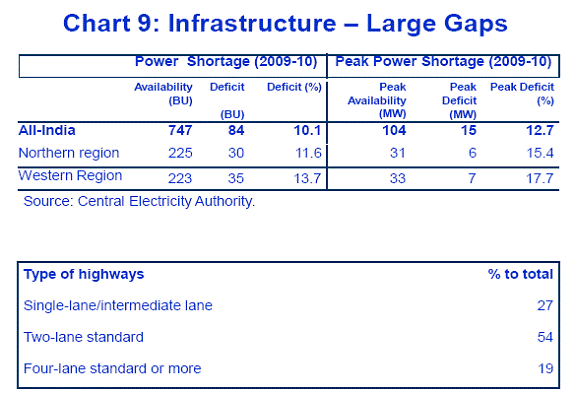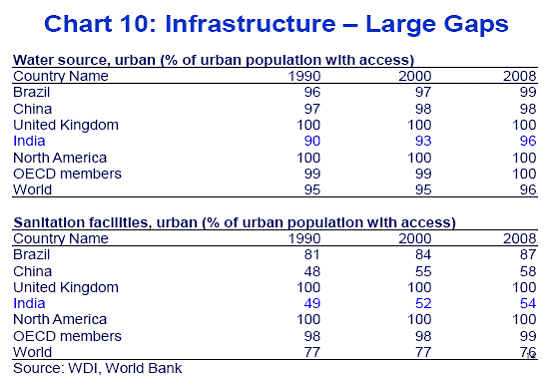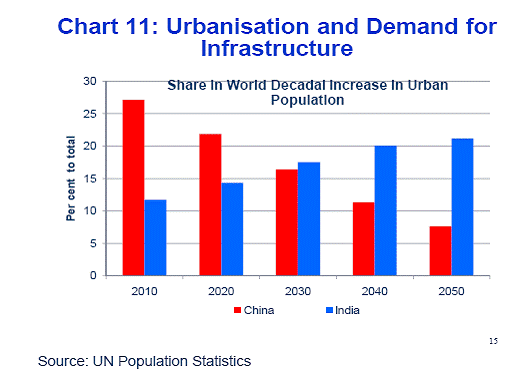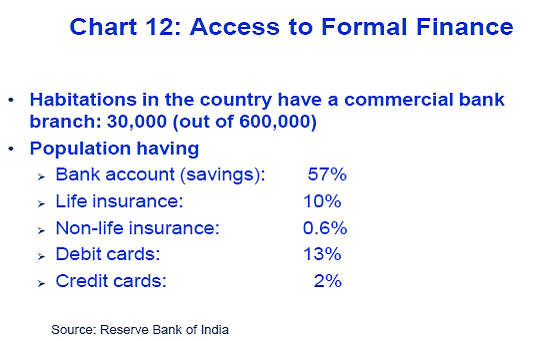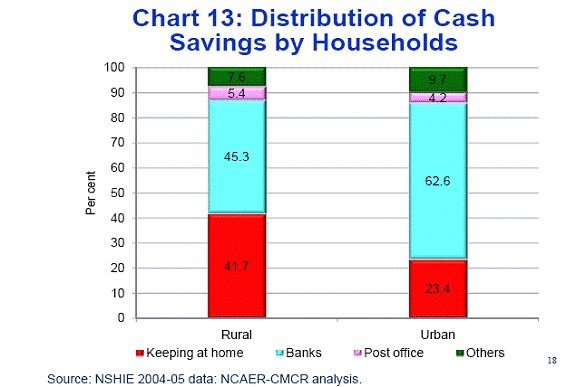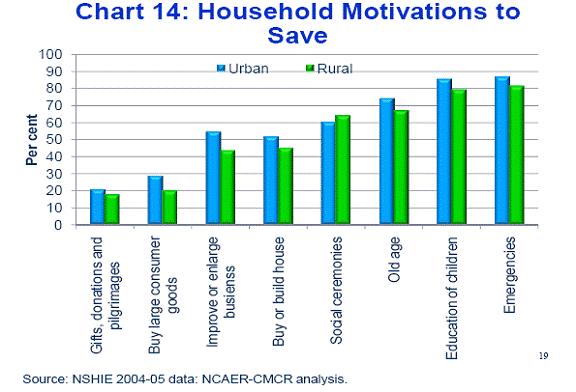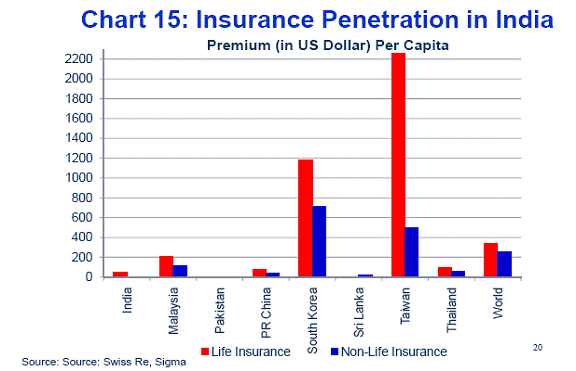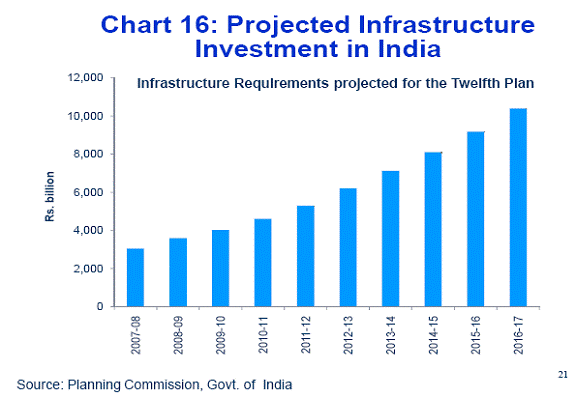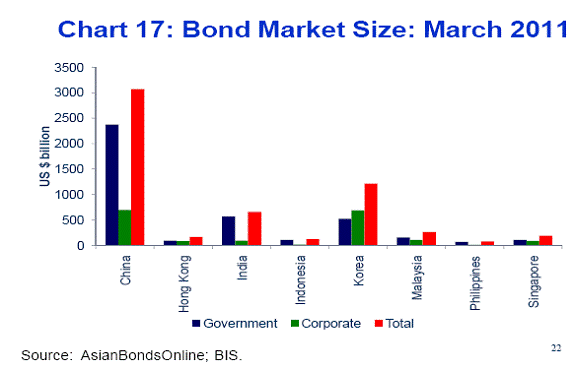 IST,
IST,


Economic Reforms for Sustainable Growth
Dr. Subir Gokarn, Deputy Governor, Reserve Bank of India
delivered-on ಜುಲೈ 08, 2011
Economic Reforms for Sustainable Growth* I. Introduction It is a great pleasure and privilege for me to be speaking at the 175th Annual General Meeting of the Madras Chamber of Commerce and Industry. I have had the opportunity to speak at previous events organized by the Chamber, and also interact with committee members and the secretariat during my tenure as the chairperson of the Economic Affairs Committee of ASSOCHAM. But, this is a special occasion and I thank the Chamber for inviting me to speak on a topic that has been close to my heart and mind for many years now. Food inflation is a significant negative feature of today’s economic environment. It has a tremendous impact on quality of life, as people struggle to maintain nutritional standards that they had previously achieved, or give up some other forms of consumption so as to keep themselves well-fed. For a country that legitimately believed that it had effectively dealt with its vulnerability to food shortages in the form of the Green Revolution of the late 1960s and early 1970s, the current situation comes as a rude reminder that solutions are rarely permanent. The enduring solution to persistent demand-supply imbalances in food is to rapidly increase supply. This is exactly what the Green Revolution did. The combination of inputs that achieved that success is well-known and some lessons may yet be relevant. The basic principles, however, are quite clear. Production of the relevant items has to be increased, mostly by increasing productivity. Cultivation risks have to be mitigated for farmers to find these products more attractive. Transportation, storage and distribution efficiency have to be increased to keep losses and distribution margins down. These may seem obvious points, even clichés, but there is no getting around them. There will be some generic strategies and some crop-specific ones, which makes it worthwhile to approach the problem from a wider perspective. A first step has been taken by the Government in setting up the National Mission on Protein Supplements, from which a concrete action plan needs to emerge quickly. In its absence, the likely scenario is one of persistent food inflation and, from the all-important perspective of quality of life, persistent nutritional imbalances. This is not a recipe for sustainable growth. III. Human Capital India is the second most populous country in the world and will become the most populous in a couple of decades. It is also one of the youngest and will remain so for some decades to come. At one level, this “demographic dividend” provides an enormous opportunity. Chart 4 shows the contrasting demographic transition in India and China over the next two decades. The Chinese growth story over the past three decades has been well chronicled and I don’t want to go into it here, except to make the point that a critical input into the sustained high growth was the abundance of labour. Of course, other policies contributed, but they can all be seen in terms of how they facilitated the absorption of large numbers of workers from the farms into the factories. The main point that Chart 4 makes is that the Chinese pool of workers is going to shrink as the population ages over the next two decades, during which period India will add a substantial number of workers. While China will lose about 40 million workers between 2010 and 2030 as they move past the age of 60, India will actually add 220 million workers. In terms of competitive advantage, this is an opportunity to take over the mantle “factory to the world”, with hundreds of millions of relatively low-cost workers producing goods that the rest of the world will consume. In fact, as Chart 5 shows very clearly, India will dominate the global pool of workers as China’s population ages, because no other country that is likely to face the same level of labour costs as India, is anywhere close to having that number of people. If the hub of global manufacturing is to move from China, realistically speaking, it can only move to India, or to expand the geographic scope somewhat, South Asia However, the mere fact that the economy has a large number of potential workers doesn’t guarantee that they will be employed in desirable, relatively high-productive, well-paying jobs. There is nothing automatic about the process, which is what makes the other policies that facilitate and support it extremely important. This is where some questions about India’s ability to replicate the process arise. A basic concern is the quality of the workforce. Chart 6 provides a comparative picture of the most basic workforce quality parameter, i.e., whether workers have been through secondary school. Evidently, despite significant improvements in India’s record, it lags a long distance behind China and the South-East Asian economies, all of which have been, or still are, manufacturing powerhouses. Of course, the mere fact of having finished school does not guarantee that a worker can be productively employed. Vocational, job-oriented training may be a necessary part of equipping workers to function. Data on these indicators are sketchy, but anecdotal evidence suggest that this is not a very large pipeline and, in its current state, can hardly hope to make a dent on the large numbers of potential workers today, let alone the surge that is anticipated over the next two decades. Partly as a result of this, but also due to some other factors, some of which will be addressed in the next section, India’s record in moving people from farm to factory has not been very good. As Chart 7 shows, over the 1993-94 period, the structure of economic activity changed significantly. While the share of agriculture declined, the share of services increased and that of industry virtually remained the same. The decline in the share of agriculture is a universal historical pattern, but the transition of the share predominantly to services is unique to India. But, that is a separate issue. What is striking in Chart 7 is that the transition in the workforce has been far less significant. Over 55 per cent of the workforce remained in agriculture, with the decline in this sector’s share being equally absorbed by industry and services. In 1993-94, agriculture, with 30 per cent of GDP, was providing employment and livelihood to 65 per cent of the workforce. By 2007-08, the same sector accounted for less than 17 per cent of GDP, but continued to support 55 per cent of the workforce. In short, the workforce did not restructure as rapidly as the economy did, indicating the inability of the non-agricultural sectors to absorb workers. How much did this impact livelihood and inequality in the economy? A simple calculation gives some indication. Chart 8 displays the absolute and relative levels of average labour productivity across the three sectors, agriculture, industry and services. Although these are very crude measures of productivity differentials, the magnitudes are suggestive. The graph shows that the average worker in industry or services is about 5 times as productive as the average worker in agriculture, which means that the ratio of their earnings must be about the same order of magnitude. In other words, in terms of this simple arithmetic, every worker shifting from agriculture to industry or services would contribute four more units of GDP, besides spending and saving more out of higher earnings. As crude as the arithmetic may be, the point is clear. Accelerating growth in a way that is sustainable will inevitably involve moving workers from agriculture to industry and services. However, the past pace of transition does not provide much reassurance that the Indian economy does this very well. Facilitating the transition is, therefore, a critical requirement for sustainable growth. In my view, three things are absolutely necessary for this to happen. First, there is evidence to suggest that job security regulations in the manufacturing deter employers from hiring workers. There are clearly ways around this, but since they exist, their deterrent effect is probably being felt. Second, if job security is eliminated, workers must have access to a safety net of unemployment insurance. By all accounts, the Mahatma Gandhi National Rural Employment Guarantee Scheme (MGNREGS) is providing a tangible safety net for rural workers. It is time to think of cost-effective ways to extend safety net access to industrial workers as a concomitant to scaling down job security regulations. Third, large numbers of workers have to be trained and equipped to work in modern industrial environments. Whether this is to be done through traditional schooling or alternative methods is a matter of debate, but the primary objective should be to move from generic knowledge to work-oriented skills. The numbers involved indicate that the whole exercise is going to be a huge organizational and financial challenge, but it must be faced. IV. Infrastructure The third critical area for reforms, to my mind, is infrastructure. The problems in most infrastructure sectors are well-known and can be summarized in a couple of sentences. Rapid growth has raised demand for infrastructure services far in excess of available capacity. Meanwhile, a combination of policy, regulatory and financial factors has slowed the pace of investment in infrastructure, leading to a persistence of the gap. We can look at this basic condition of shortage from a variety of perspectives. Charts 9 and Chart 10 provide some indications of the gaps that currently exist. Chart 9 reinforces the general perception of severe power shortages across the country. The Northern and Western regions are relatively dynamic in terms of their growth momentum and the magnitude of shortage that is estimated for them may prove to be significant drag on growth. Of course, since the deficit has persisted for some time, most establishments look for alternatives in the form of captive power. However, this is relatively costly, not to mention more dependent on diesel, which then contributes to an increase in petroleum demand, which has both fiscal and balance of payments consequences. The Chart also provides an indication of how much distance there is to cover in providing the country a comprehensive four-lane highway system, the absence of which is leading to huge inefficiencies in the national transportation system. The impact of inadequate supply of power and transport infrastructure on manufacturing activity is quite significant. This sector, in general, is infrastructure-intensive and any increase in costs due to unreliable or privately provided infrastructure services tends to reduce the competitiveness of producers. Since virtually all manufactured goods are tradable, inefficient domestic cost structures put producers at a disadvantage not only in global markets but also in their home markets, where they have to compete against imports. This is a significant reason why the Industrial sector's share of GDP has virtually remained the same over a long period of time. This is in sharp contrast to virtually all other economies, particularly those in East Asia, whose industrial sectors acted as engines of growth, resulting in a large increase in their share of GDP over comparably long periods. Chart 10 focuses on parameters that impinge very directly on quality of life, access to water and sanitation. These statistics suggest that access to water is relatively high, but sanitation is a different matter altogether. It is no comfort that on this one parameter, India and China are quite close to each other. Over 45 per cent of India's population is estimated to be without access to sanitation facilities, a gap that presumably vitiates many of the quality of life improvements arising from higher earnings and better access to a range of goods and services. This leads to a larger point about urban infrastructure. As we look ahead at the country's population trajectory, apart from the aggregates, it is very important to keep in mind that there is likely to be a significant shift from rural areas to urban areas. Chart 11 provides projections of the incremental contribution to the world urban population expected to come from India and China over the next few decades. Evidently, Indian cities are going to become the repository of a very large number of the young workers that the country will add to its workforce during this period. In a situation in which cities are already reeling under enormous pressure on all urban systems because of rapidly increasing population, their ability to cope with even larger numbers without both more resources and significant increases in their organizational and managerial capacities is doubtful. In a nutshell, the infrastructure problem has two dimensions - sectoral and geographic. Each needs distinct focus in order to arrive at meaningful solutions. As far as sectoral imbalances are concerned, there are fortunately areas in which significant progress has been made. Over a period of time, policy clarity has been achieved and appropriate regulatory structures have been or are being put into place. This, in turn, has created the space for significant private investment to flow in, typically though not always in partnership with the public sector. In fact, for the past two years or more, infrastructure has been the largest contributor to growth in bank credit. This has given rise to some problems, which I shall address in the next section, but, it is a reassuring sign that new infrastructure capacity is being created. As the supply-demand gaps in a variety of sectors close, the stress that they impose on industrial investment will ease. Conditions will be created for new industrial capacity to be created, unburdened by uncertain or high-cost infrastructure services. This, in turn, should facilitate the movement of workers from relatively low-productivity agriculture to relatively high-productivity manufacturing, provided that the policy framework indicated in the human capital discussion are put into place. However, the urbanization scenario raises concerns. If the ultimate goal of sustained growth is to create enduring improvements in the quality of life of as many people as possible, this is not going to be achieved if urban systems do not keep pace with the number of entrants. Fortunately, there are a number of initiatives in place that at least provide the prospect for the needed improvement. These are both top-down and bottom-up approaches. The Jawaharlal Nehru National Urban Renewal Mission (JNNURM) is the primary example of the former, in which the central government provides resources for urban investments, subject to explicit accountability standards as well as resource commitments by city governments. In the bottom-up category, many cities have launched initiatives to digitize their land records, which immediately enhance the capacity to collect property taxes, always a significant source of revenue for cities. Simplification of tax formulae and procedures is another aspect of urban governance reform. Rationalization of user charges for civic services, the use of private agents to provide some services, e.g., waste management and so on are all ways in which cities are going about the task of improving service delivery to their current residents as well as creating the capacity to do so for newcomers. As reassuring and promising as all these programmes and initiatives are, they do not seem to be at a scale matching the enormity of the challenge. A significant restructuring of urban governance framework, which helps build the capacity to meet the challenge, is therefore a reform priority in this domain. There is plenty to learn from the experience of other countries where the quality of urban environment is noticeably superior to that in India. Some broad guidelines may include, for example, greater powers to tax with a consequent decrease in the dependence on higher tiers of government, and the creation of a professional cadre of urban management specialists, who spend their entire career running the city and can rise to levels of seniority comparable to other government hierarchies. Of course, cities exist in a socio-cultural context, so no model is strictly transplantable, but that does not mean that some widely applicable principles do not exist. There have been other kinds of suggestions specifically in the Indian context, e.g., to convert the larger cities into Union Territories to give them some autonomy from political economy forces at the state level, which also tend to favour rural areas due to simple electoral arithmetic. Such ideas are worth examining. But certainly, any means of giving cities both greater autonomy in resource mobilization, along with greater managerial capability need to be pursued, even if this is to be achieved within the existing federal framework. V. The Financial Sector Looking back over the past 20 years, there have clearly been massive changes in the financial sector, which have completely changed the nature of intermediation, the range of products and services available and the intensity of competition. This has clearly been in sync with the overall development and structural change of the economy. The financial sector has had the space to service the requirements of an increasing number of individuals and organizations. However, the process is clearly far from complete. It is useful to think of financial sector reforms as a perpetual work-in-progress, in which policy and regulation need to create space for service providers to cater to increasing and new customer requirements, while ensuring that existing and emerging risks are monitored and mitigated. This topic could be the basis of a full-length speech by itself, but I clearly don't want to do that here. I will confine myself to two sets of issues - financial inclusion and the development of a corporate bond market. Expanding the reach of financial services to those individuals who do not currently have access is an objective that is fully consistent with the people-centric definition of sustainable growth. Going by the evidence, there is a long way to go in achieving this objective. Chart 12 provides a picture of the current levels of access to different financial products and services. Bank accounts are relatively widespread, but even in that most basic of services, the gap is quite large. Other services have very low levels of penetration. Of course, high penetration depends on demand conditions as well and not everyone may want or need every kind of product or service, but, as subsequent Charts will suggest, the unmet demand for some kinds of services may be quite large.Chart 13 makes the point that a very high proportion of household financial assets are held in cash, which suggest that the ability of many households to access the financial system is low. This is, understandably, even higher in rural areas than in the urban ones. Bank deposits are clearly providing an alternative to cash, which is a positive development, but the room for improvement is clearly visible in the picture. What other products may interest this new pool of financial service customers? One way to gauge this is to identify the reasons for people to use financial services. Chart 14, reporting results from a recent survey of households, provides some important insights on this. Ceremonies or social obligations, old-age security, children's education and meeting emergency needs are four of the most important motivations for accessing financial services. Clearly, there is a role for insurance, pension and other long-term savings instruments in advancing the cause of financial inclusion. It is in these segments that penetration is extremely low. Chart 15 provides a cross-country comparison of insurance services. It speaks for itself. What is needed here is to develop last-mile delivery mechanisms that can take these products from the large providers in the formal sector to this vast pool of new customers. Though volumes are potentially large, individual transactions will be small and geographically scattered, which can play havoc with costs. Organizational structures, whether within the existing providers or independent, have to be developed to accommodate these specific market conditions. From a regulatory perspective, the massive expansion of services brings with it risks and these have to be identified and provided for. I will now turn to the issue of the corporate bond market. To provide a backdrop, Chart 16 shows the estimated financial requirements for infrastructure over the 12th Plan period, 2012-17. Over the next five years, over Rs. 40 lakh crores or $ 1 trillion are desired to be invested. As I indicated earlier, infrastructure supply is a serious bottleneck and large, efficiently implemented and well managed projects across sectors are imperative. Even as these are getting under way, there is an obvious lack of financial channels for them to mobilize resources. So far, the responsibility for financing new investments has fallen predominantly on banks. For reasons relating to asset-liability management and sector exposure limits, the capacity of banks to continue to finance this sector is limited. Therefore, alternative channels have to be quickly put into place. The corporate bond market is perhaps the most important of these. For several years, one committee after another has been making recommendations for actions to develop this market. These cut across regulatory domains and this is perhaps one reason why, despite the several steps taken, a critical threshold that would make the market viable was not reached. However, in recent months this is on high priority with both the regulators and the government addressing the remaining binding constraints. The 2011-12 Union Budget took a crucial step in exempting bonds issued by Infrastructure Development Funds from withholding tax. It would be reasonable to extend this facility to bonds issued directly by infrastructure companies. Another issue that has been flagged, inter-state differentials in stamp duties, is being addressed by attempting a harmonization of rates across states. To make a large number of bonds attractive to a potentially large domestic investor base in the form of insurance and pension funds, credit enhancement mechanisms which will allow bonds to meet minimum rating requirements for a price are being explored. The more efficiently and reliably this service is delivered, the larger will be the potential pool of investment for these huge institutions. Of course, aspirations notwithstanding, the question is whether bond markets can realistically emerge as an alternative channel of financing, for infrastructure certainly, but also for investment in other sectors. Chart 17 provides a cross-country comparison. It would appear that even in the context of emerging economies, Indian bond markets do have some headroom available. VI. Concluding Remarks I have addressed four sets of factors, which I believe hold the key to sustainable growth and tried to articulate my thoughts on what the policy imperatives are. As I have pointed out, in many areas, reform measures have been taken or are in the pipeline. However, there are also many in which either action needs to be taken on the basis of credible supporting evidence or, new approaches and solutions need to be visualized. I also want to re-emphasize my caveat that this was not meant to be an exhaustive list of actions for sustainable growth. I will not attempt to summarize my thoughts on actions and solutions for each set of factors. But, I would like to end by emphasizing three key principles that have provided, explicitly or implicitly, a common thread running through my presentation. Second, any policy or strategy must give due consideration to the risks involved. High-risk-high-return may be a valid approach to portfolio management by individuals, but is not so in a policy setting, where it is difficult to justify the large losses to some stakeholders in terms of large gains to others. "The greatest good for the greatest number" is certainly a valid premise for policymakers, but it needs to be complemented with "the least risk for the greatest number". In situations in which heightened risks are unavoidable for some stakeholders, reliable safety nets need to be an integral part of the strategy. Third, a pragmatic, "whatever works" approach is important. There are multiple environments, multiple economic, social and political contexts in which policies are made and implemented, even within a single country. No single solution can be expected to work in all of them. Bottom-up thinking, which draws on local knowledge and understanding to design appropriate solutions is necessary. At the same time, a top-down element, which articulates common goals and policy principles, increases efficiency in resource mobilization and allocation and facilitates learning across jurisdictions, also plays a critical part. An optimal mix of the two needs to be found. Let me end by once again thanking the MCCI for inviting me to speak on this special occasion. I do hope that my presentation met your expectations.
* Inputs from Bhupal Singh are gratefully acknowledged. |
ಪೇಜ್ ಕೊನೆಯದಾಗಿ ಅಪ್ಡೇಟ್ ಆದ ದಿನಾಂಕ:






